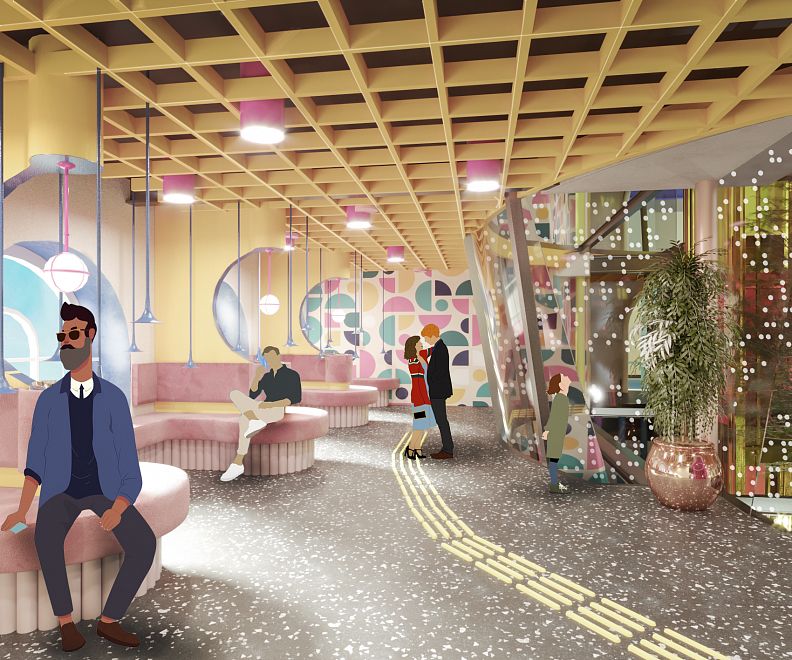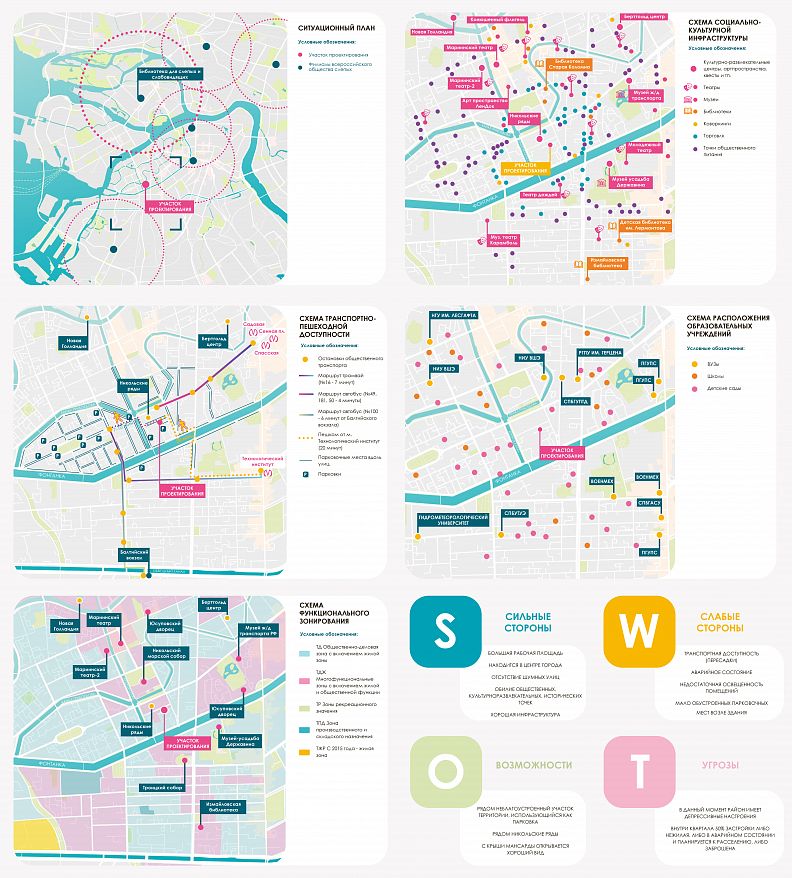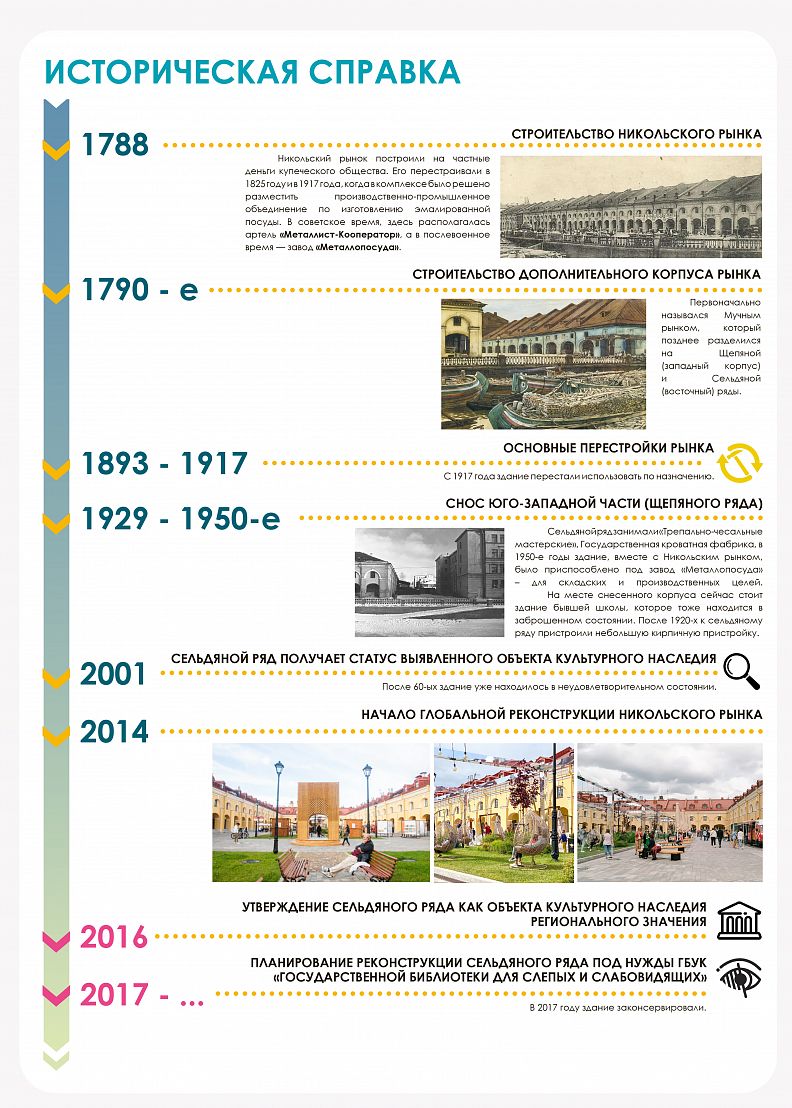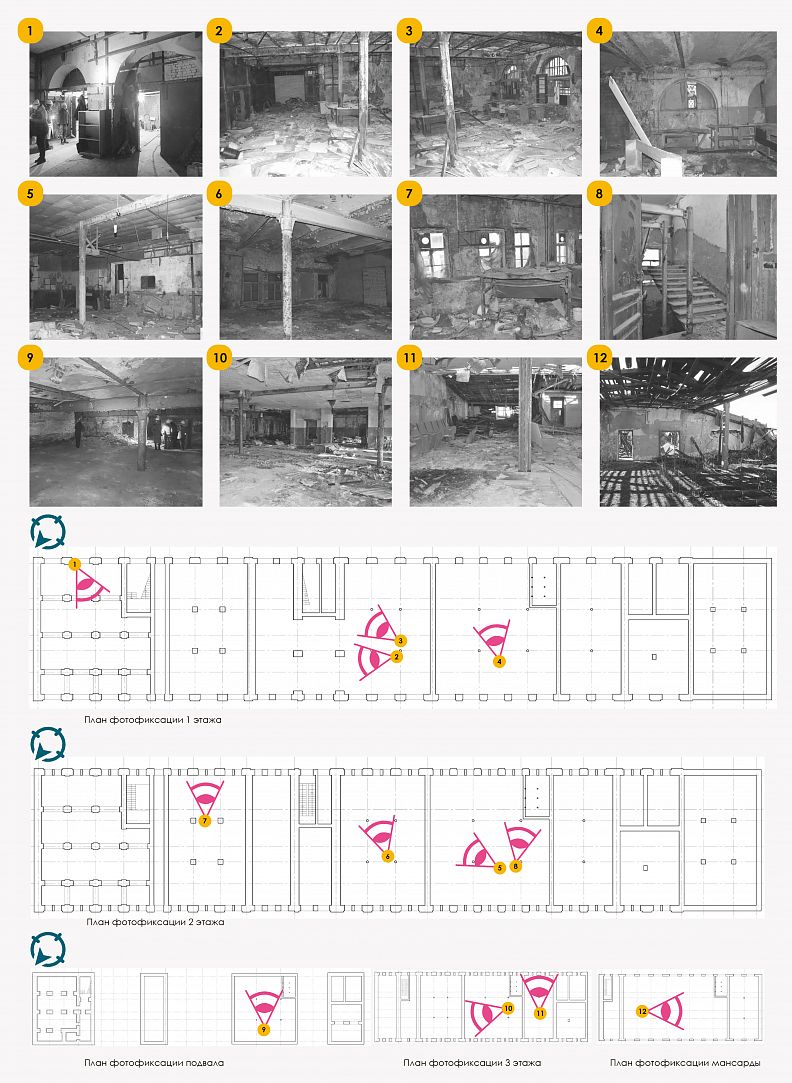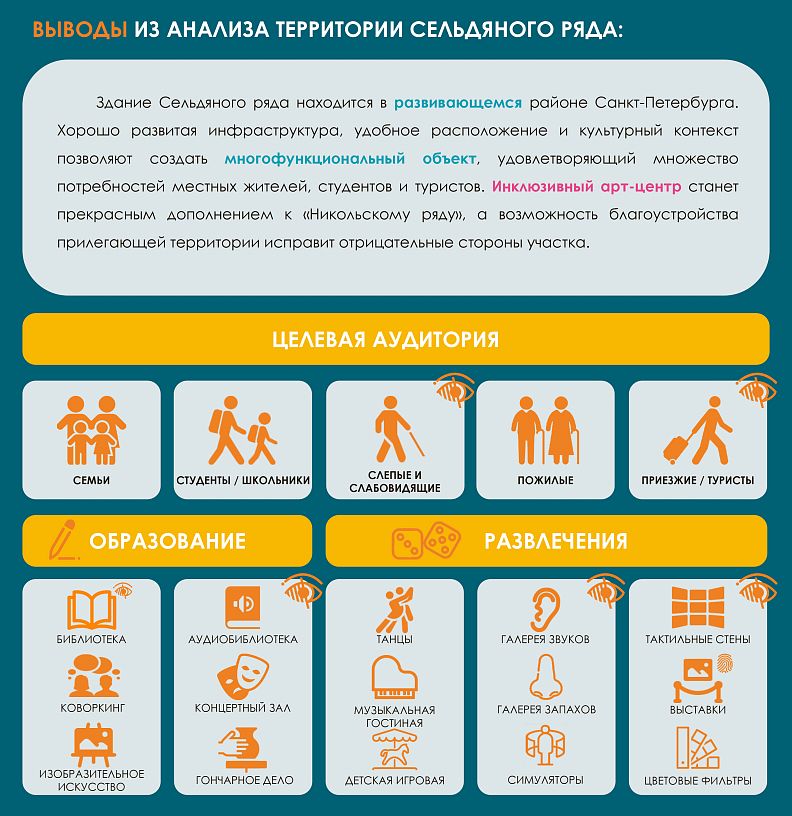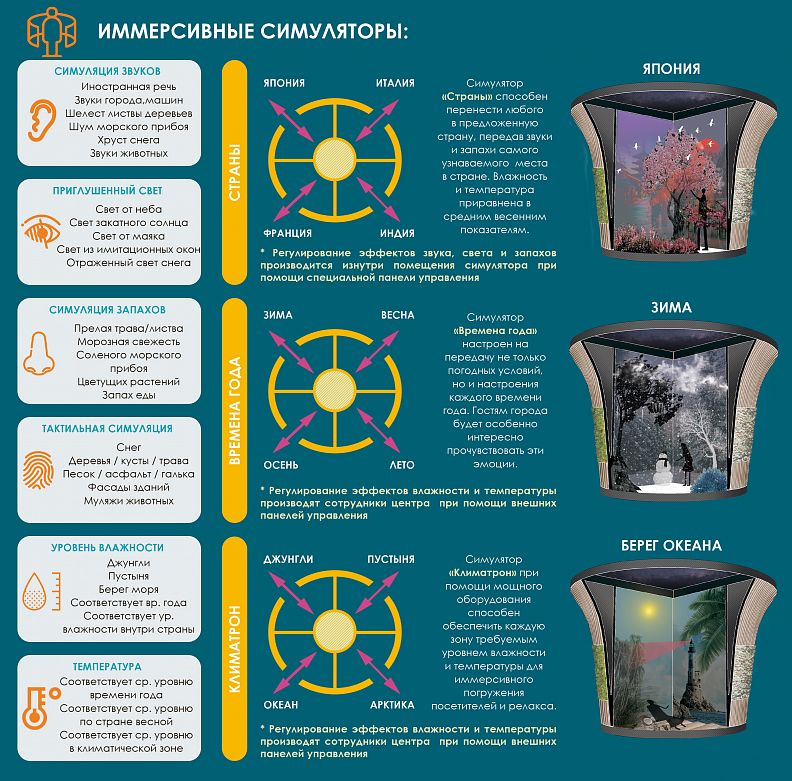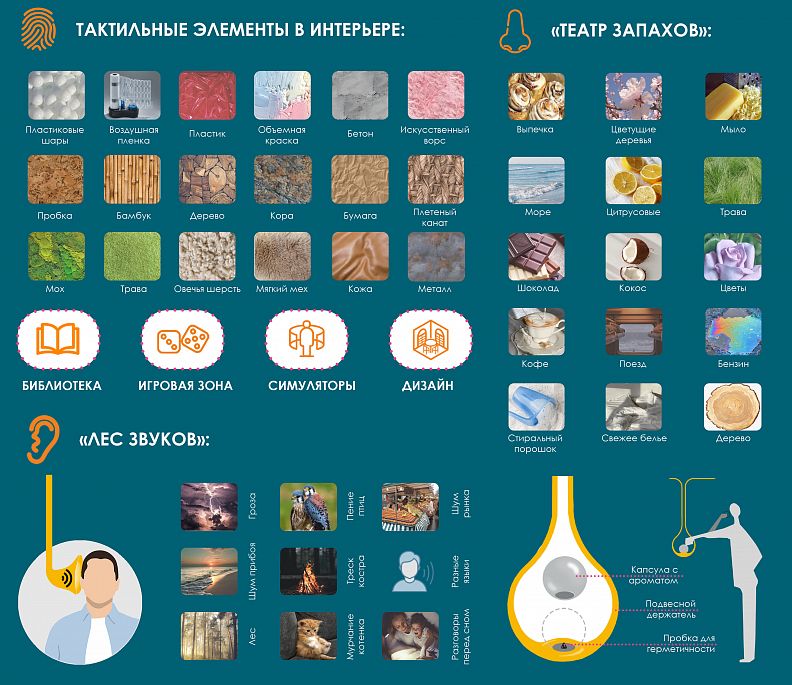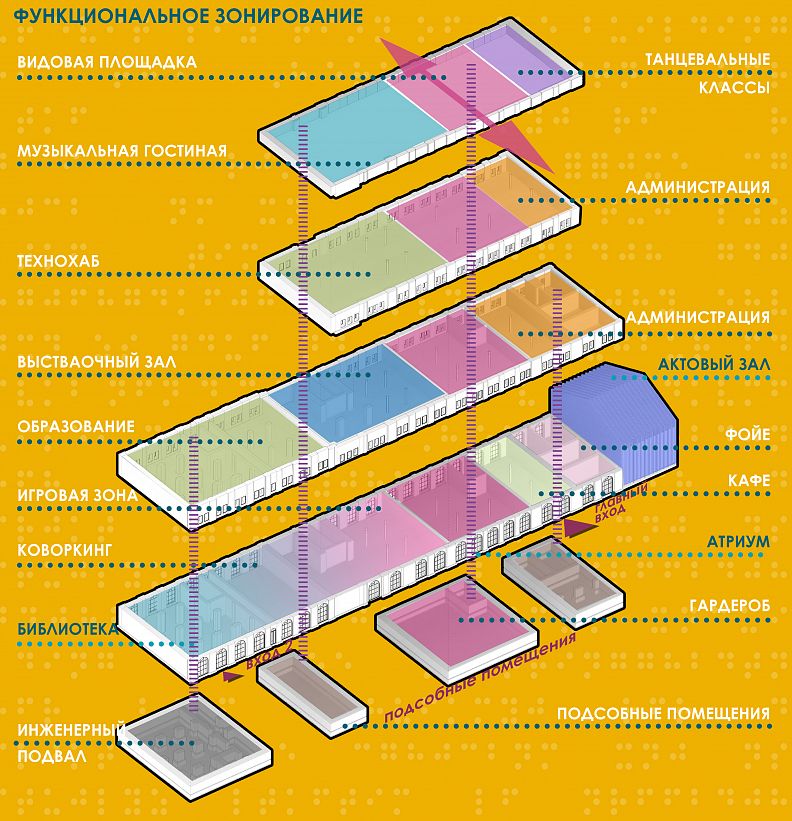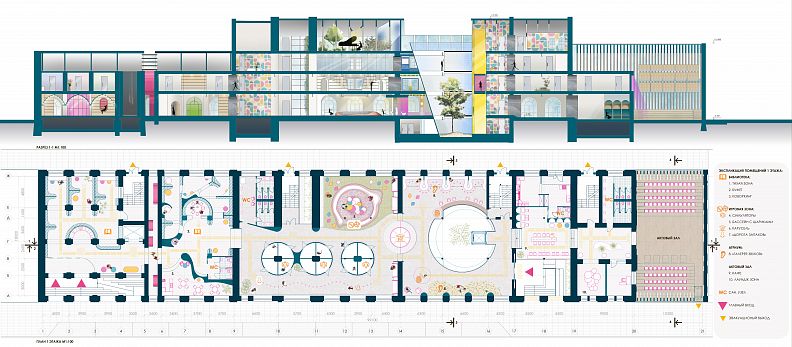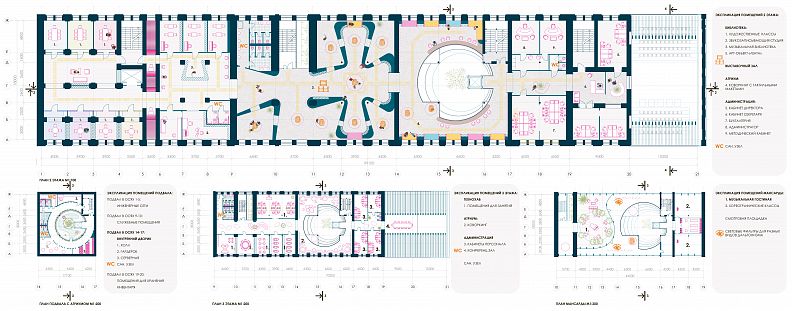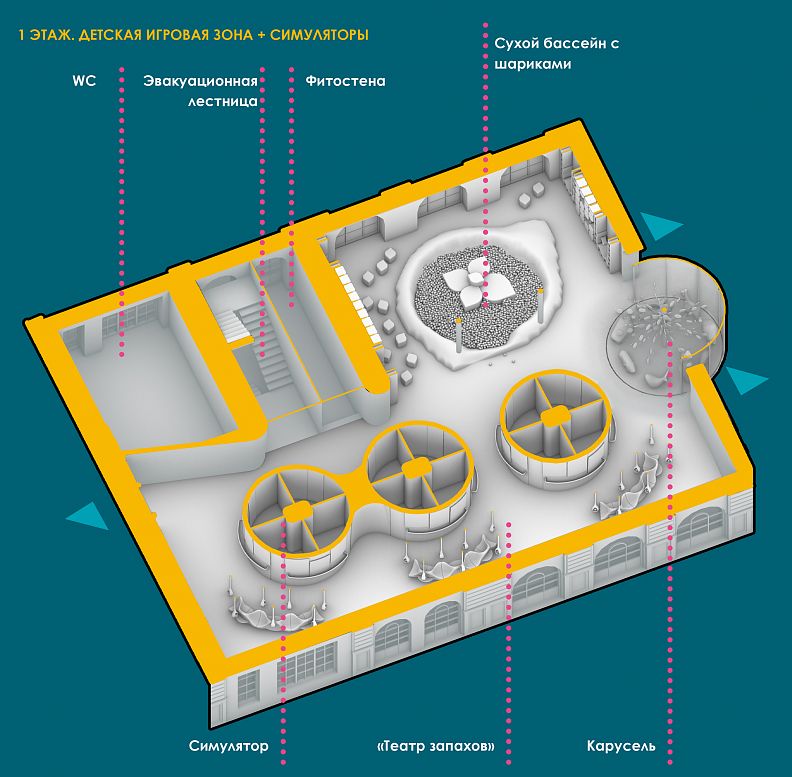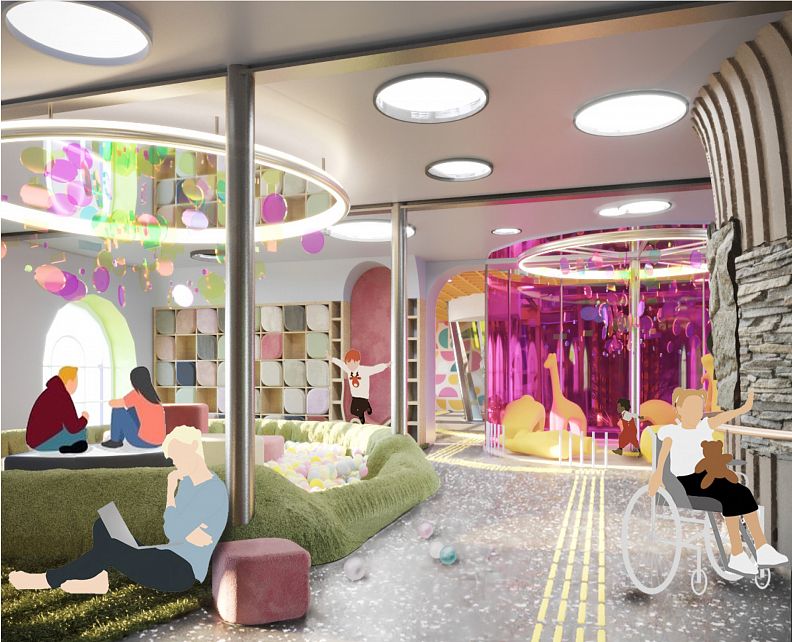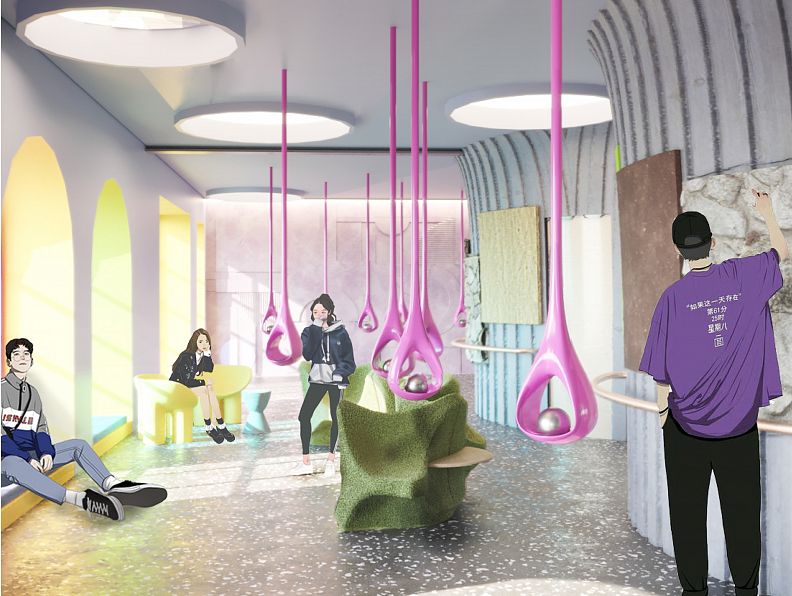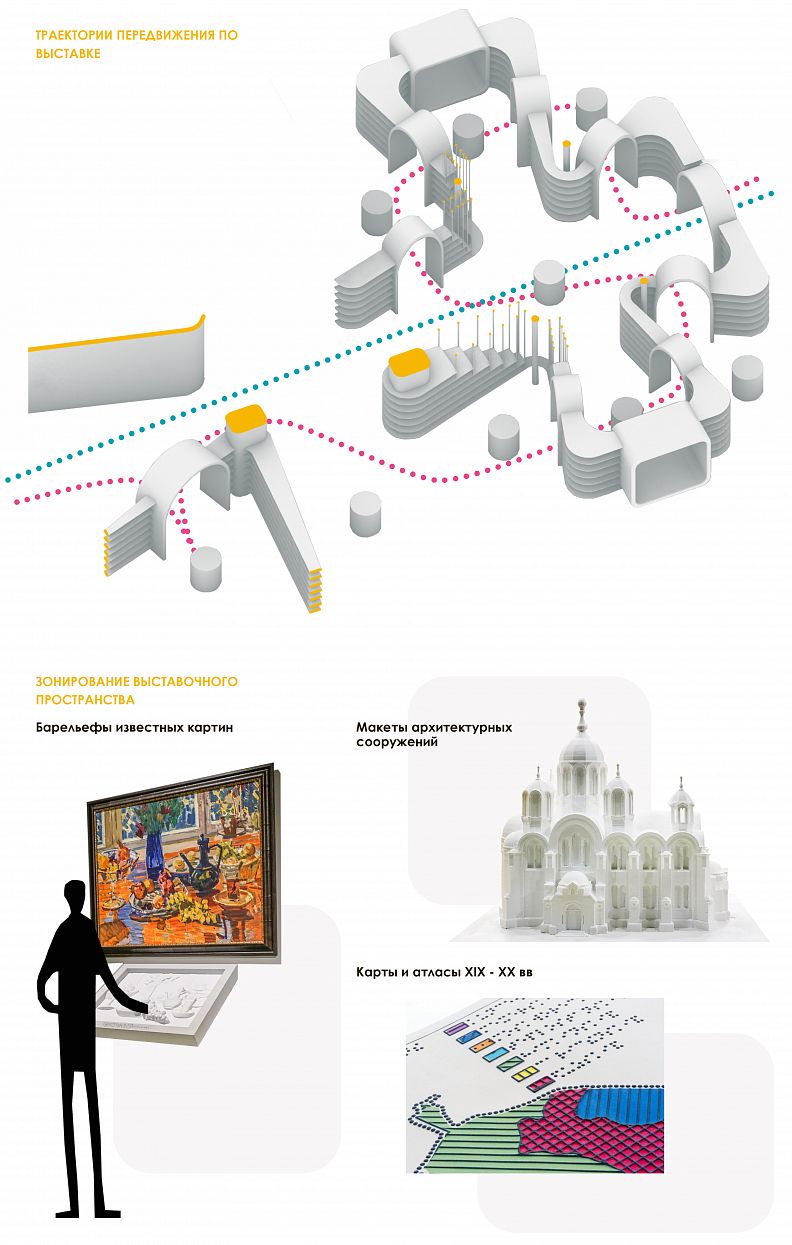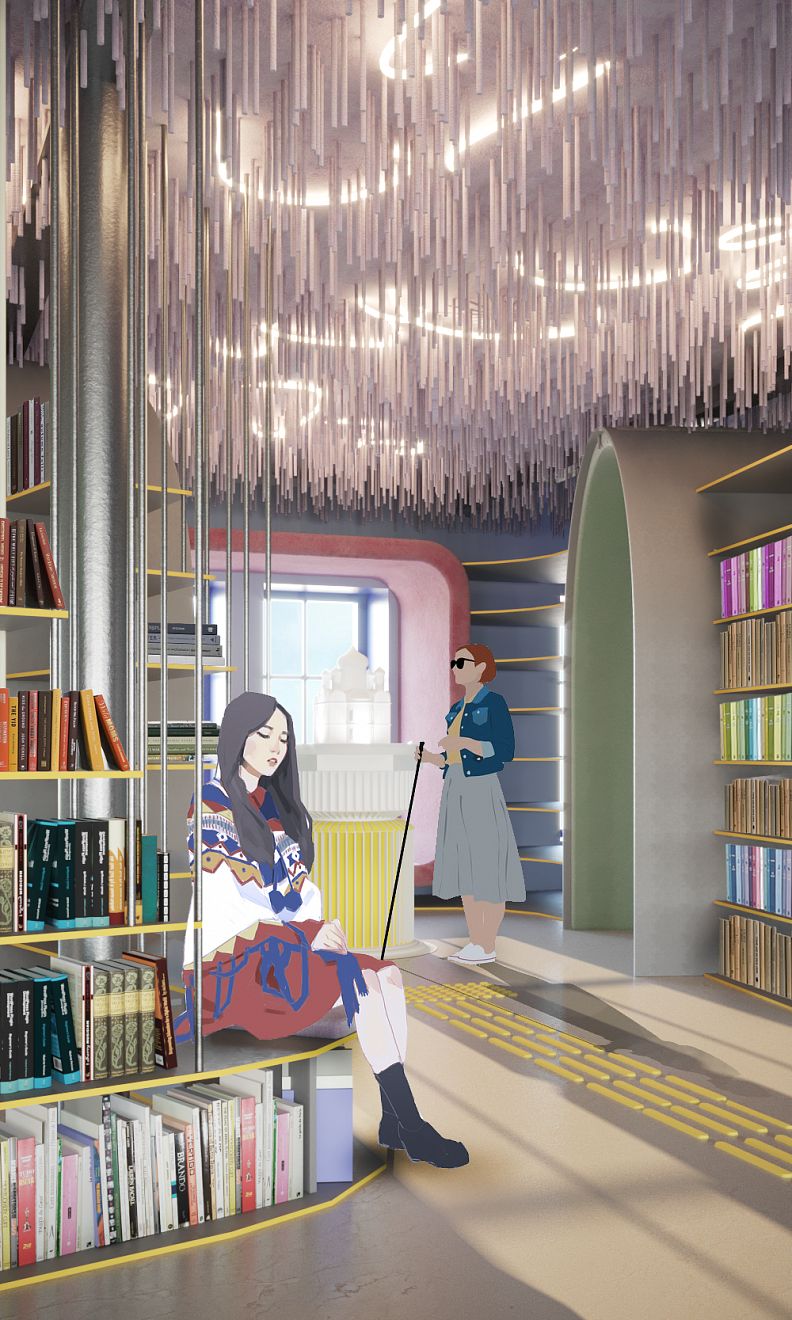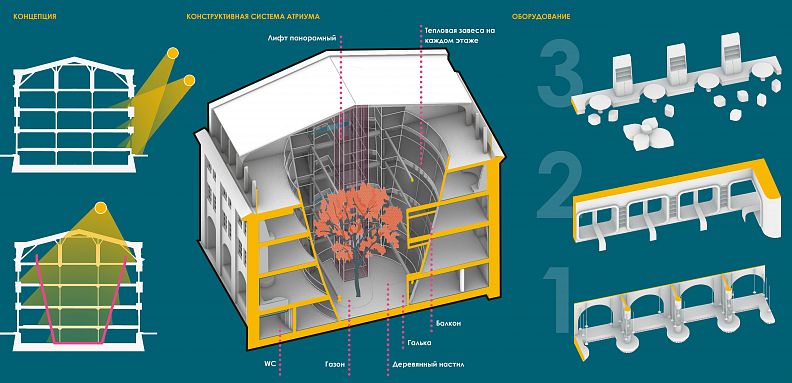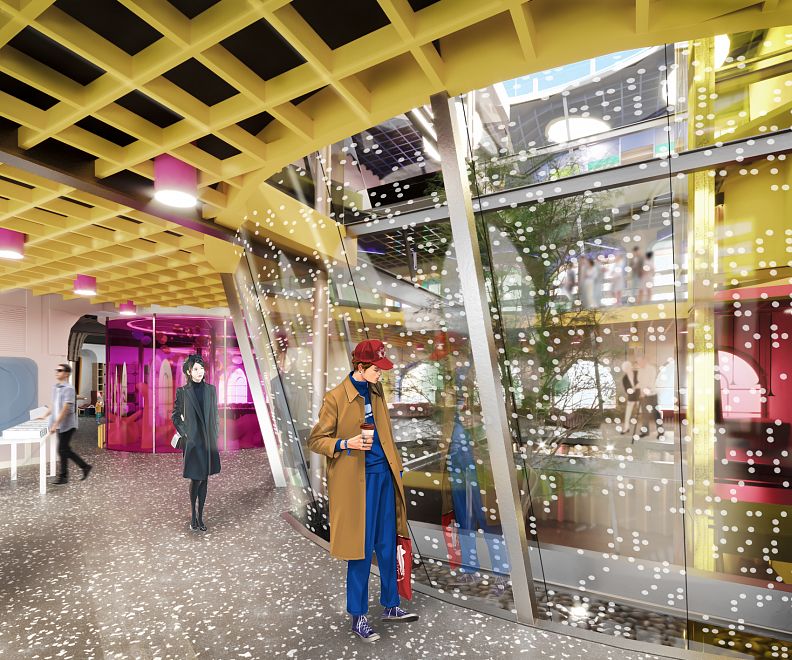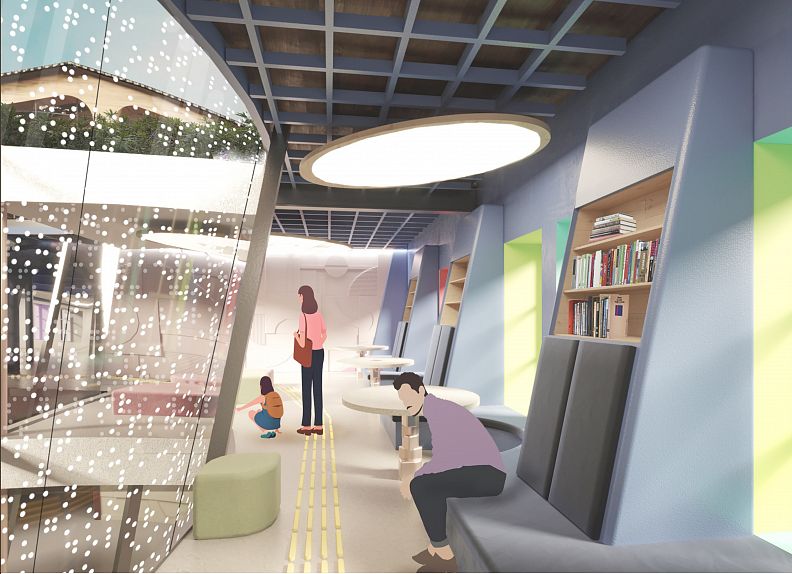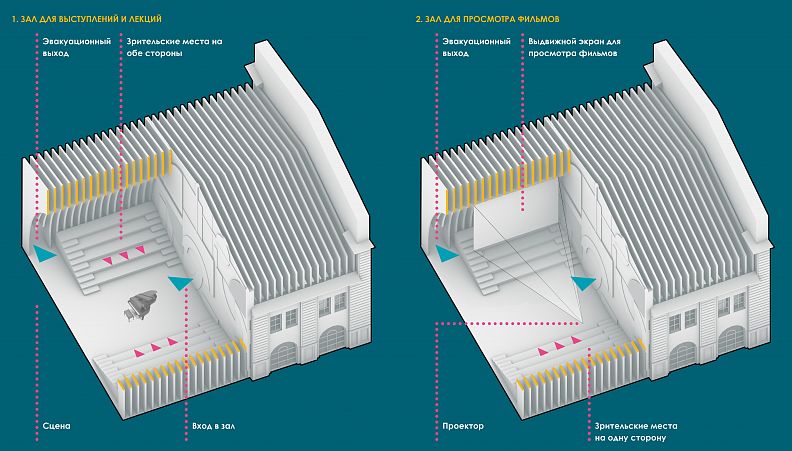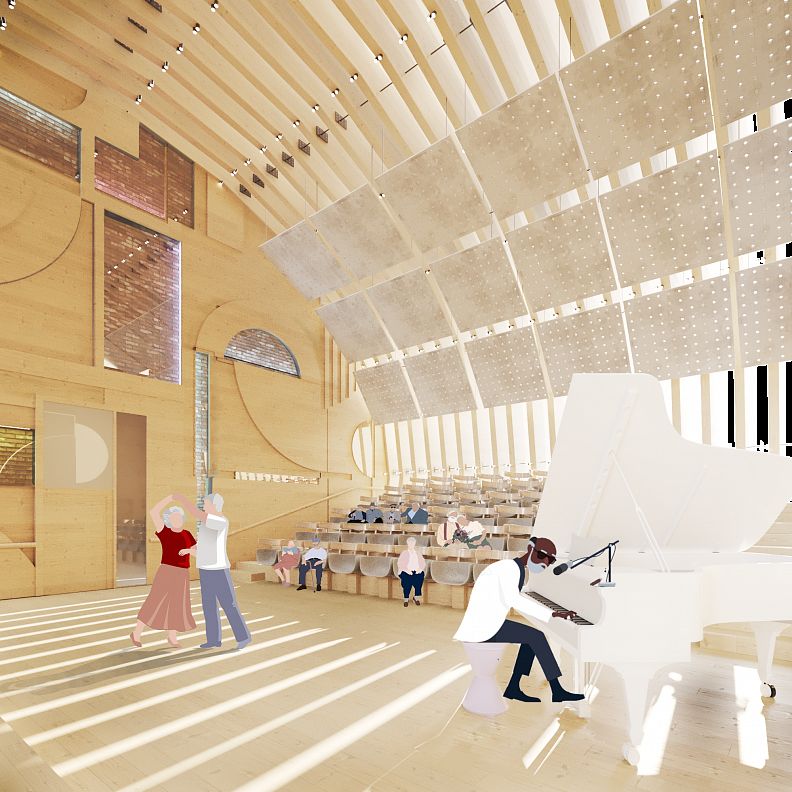Revitalization of the "Nikolskiy market". The design concept of an inclusive art center.

Project idea
Today, the issue of an inclusive environment is one of the most discussed in society. People with disabilities, including those with partial or complete loss of vision, should have equal rights with others not only to receive an adequate level of education, but also a chance for full-fledged leisure. The building of the "Seldyany Ryad Nikolsky market" belongs to the All-Russian Society of the Blind in St. Petersburg - this means that the city has the opportunity to expand the boundaries of leisure for this group of the population.
According to statistics for 2020, there are more than 9 thousand people with visual disabilities in St. Petersburg. At the moment, there is the only modern institution in the city designed for blind and visually impaired people - the central library for the blind and visually impaired on Strelninskaya Street, house 11. For many reasons, the presence of only one such center for a city of federal significance is not enough. Thus, the creation of a new leisure center for people with visual disabilities is relevant.
The main idea of the project is the formation of an inclusive complex as a "public place" of a cultural, educational and educational nature, which will provide an additional opportunity for informal communication, providing comfortable conditions for everyone's leisure time.
One of the main goals of creating a concept project is to study the world through all the senses. This will allow people with limited physical abilities of vision, hearing and others to experience the diversity of what surrounds them (what smells, materials, sounds), and everyone else to appreciate what they can feel every day.
Project description
The structure of the art center includes areas for employees of the complex, a recreational area, an assembly hall, a library with open access to a repository of paper books and audio discs, a coworking, a play area for children and teenagers, educational classes, exhibition halls, a viewing platform, a techno pub, a music lounge and dance classes.
The building is supposed to organize various zones in accordance with the principles of universal design (the design is comfortable for everyone) - a modern exhibition space with tactile models; a theater and concert hall for the implementation of inclusive theater projects with the participation of citizens with disabilities, showing adapted theater productions and films with typhlokommentaries; adapted multimedia play spaces for children and adults; studios for conducting master classes in drawing, pottery, etc.; recording studios (among the library's visitors there are blind musicians, professionals and amateurs); a music lounge; spaces with open access to the library's collections for adults and children in various formats; coworking spaces; spaces for creating multimedia content; a technohub; a book depository for the citywide fund of Braille publications; a conference hall for holding international and all-Russian scientific and practical conferences, seminars, round tables (the library is a scientific and methodological center for working with visitors with visual disabilities in the field of culture).
Three immersive simulators are located on the 1st floor in the game area. The purpose of creating such simulators coincides with the main mission of the inclusive art center - not only to give people with disabilities the opportunity to feel themselves in a completely different space and time, but also to give ordinary visitors of the center the opportunity to try on the perception of the world “by touch”. The three topics are: seasons, countries and climate. Each simulator is divided into 4 sections (rooms) •
* seasons: winter, spring, summer, autumn;
* Countries: India, Japan, France, Italy;
* climate: arctic, coastal, desert, tropical.
Along the row of immersive simulators there are suspended elements with capsules containing various oils with certain odors found both in nature and in the household component of our life: from lavender and rain to washed laundry and pancakes.
On the ground floor, in the section with the atrium, there is a lounge area where headphones are suspended from the ceiling, which you can put on and listen to the sounds of the city, nature and people. There is no opportunity to listen to your own music here, for this there is a music studio on the 2nd floor with a large audio library, rooms for playing instruments and even a recording studio.
Technical information
The area of the projected plot is limited by the foundation line of the building, its area in the sum of three floors and an attic is 5423 square meters.
The design object is part of the cultural heritage objects of regional significance. To date, the building is in a state of conservation.
The interior uses contrasting colors that indicate the objects and equipment that matter. The textures of the equipment materials are different to the touch: from pleasant soft fabrics to rough wood and stone. Especially for children, panels with various materials for learning the world are installed on the walls of the simulators and the game room in the play area.
The brick extension, erected in the late 1950s, was proposed to be replaced with a new one to accommodate an auditorium with a capacity of 100 seats, 5% is reserved for a low-mobility group of the population. The new extension does not go beyond the boundaries of the existing foundation of the building.
The atrium is a glazed inverted truncated cone that creates natural light on all floors from the basement to the attic. The ceilings inside this volume were dismantled.
The lower radius of the atrium volume is 4.3 meters, and the upper radius is 6.5 meters.
The glazing of the atrium is made on inclined racks fixed to the existing metal rack-and-beam system. In the basement there is an exit to the courtyard. There is a Braille drawing on the glass.
